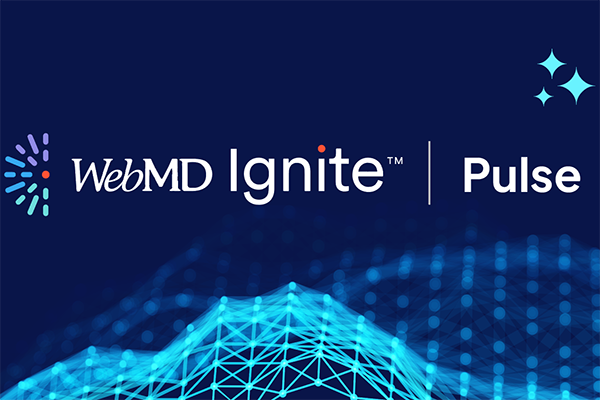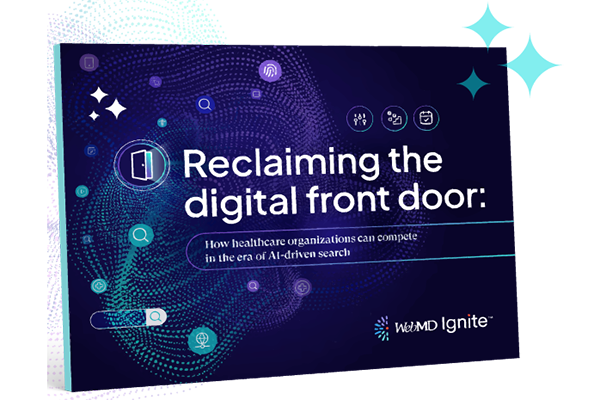Importance of patient experience FAQ

Editor's Note: This blog was published prior to the transition to WebMD Ignite.
Frequently asked questions: Why is the patient experience important?
Whether they’re researching symptoms or seeking a specialty physician in their area, today’s consumers want a personalized care experience that is tailored to their unique needs. This cannot happen by making only one change to a healthcare marketing strategy — a holistic approach is necessary in order to drive engagement at each touchpoint. Delivering targeted, personalized experiences is crucial to fostering long-term relationships with patients and improving satisfaction, ultimately leading to increased patient loyalty and social advocacy.
Benefits of improving the patient experience
- Cultivate patient retention and loyalty
- Improved patient satisfaction
- Proactive health education and awareness
- Increased overall population health
- Higher ROI yield
- Improved margins
Common patient experience questions
How can I personalize campaigns to improve patient experience?
Here are some of the things to consider when building a holistic plan for improved patient experience in the digital age:
- Contact Centers: A centralized, CRM-enabled call center introduces a wider range of functions, making it easier for callers to get information more efficiently. Some of these scenarios include referrals, event enrollment, securing convenient appointments, smart alerts for proactive wellness suggestions, or those simply seeking more information.
- Channel of Communication: Knowing the preferred method of interaction with a consumer is crucial to securing their engagement. Whether they opt for physical mail, emails, phone calls, or texts, communicating via preferred modes makes it more likely that a marketing message will actually reach the patient.
- Check-ins Between Appointments: Health organizations must prioritize regular check-ins between appointments in order to reinforce an ongoing relationship. This can be done through personalized interactions, social media, customer service, or focused marketing campaigns across digital touchpoints.
What patient experience challenges should be considered?
Often, healthcare organizations will encounter obstacles while working to build a positive patient experience. These challenges may include:
- Financial Circumstances: Whether it’s overcoming budget restrictions or key stakeholders expressing concerns around reaching the bottom line, obtaining the additional marketing budget required can be a significant challenge. This marketing budget not only goes towards patient engagement campaigns, but to revamping contact centers via technology and staffing models, MarTech investments, and the roadmaps you need to get there. The best way to do this is taking it step by step, because getting all of this marketing budget at once isn’t necessarily a reasonable expectation.
- Making Human Connections: While contact centers can boost patient engagement, they’ll only succeed if each interaction feels human. Due to this necessity, selecting the right technology partner is crucial to success.
- Moving Past Outdated Processes: It can be difficult to get everyone on board with altering traditional marketing tactics and contact centers, both of which may have been in place for a long time. While digital transformation requires a certain amount of up-front investment, it will have an immense positive impact on revenue in the long run.
How can you reinforce positive patient experiences before, during and after care visits?
Scheduling
When a patient schedules an appointment, their experience will be dictated based on the amount of time it takes for them to get their request taken care of, as well as the level of courtesy and support they feel throughout the interaction. Front desk staff play a critical role in the overall patient experience and should be hired and trained accordingly.
Precision marketing
Utilizing precision marketing tactics allows you to use data to create the right message at the right time.
Arriving at the office
The first thing a patient will notice upon arriving at a provider’s office is the cleanliness and overall atmosphere of the waiting area, as well as the demeanor of the front desk staff who check them in. A pleasant environment and prompt, efficient check-in process will have a significant impact on patient retention.
Ongoing nurtures
Post-appointment nurturing is important for creating a relationship between organizations and patients.
Patient-to-provider interaction
This is the most critical stage of interaction during the patient journey, as provider conversations, diagnoses, and treatment recommendations are central functions of the patient experience. Providers must dedicate time to getting to know their patients in order to provide the best possible treatment. This goes beyond a routine question-and-answer process and can help you to fully understand any external factors or stressors that may contribute to symptoms.
“Show me you know me”
Healthcare marketers should pick up the phone with insight into why consumers are calling. Being proactive and addressing additional issues besides the one the customer is calling about allows for a more personal interaction. For example, if you see that this customer downloaded a guide about Weight Management, offer to send additional info or find them a seminar.
Post-appointment
A patient doesn’t exit their healthcare journey upon leaving the doctor’s office – in fact, it is at this point that the journey truly begins. A courtesy follow-up call within 72 hours after each appointment should be standard practice for healthcare organizations that want to provide an excellent patient experience: It serves as an opportunity to review care plans, medications, and next steps while strengthening the relationship between patient and provider.
Journey mapping
Patient journey mapping outlines all of the patient touch points during each stage of the care journey, and aids in creating strategic outreach that improves patient engagement. This gets everyone on the same page about which strategic direction to go into.




